Malaysia has plenty of fascinating museums, but Kuching’s Borneo Cultures Museum is one of my most recent favorites. With an impressive 1600-plus artifacts on display, it’s easy to get spiritually pulled into the visuals. One of the exhibits drew me in so intensely that my eyes welled with tears. There was something hauntingly familiar about it, perhaps memories connected to my own distant Chamorro/Austronesian heritage, or perhaps just a connection to unique human stories. Call me sentimental, but when a museum affects me like that, I take note.
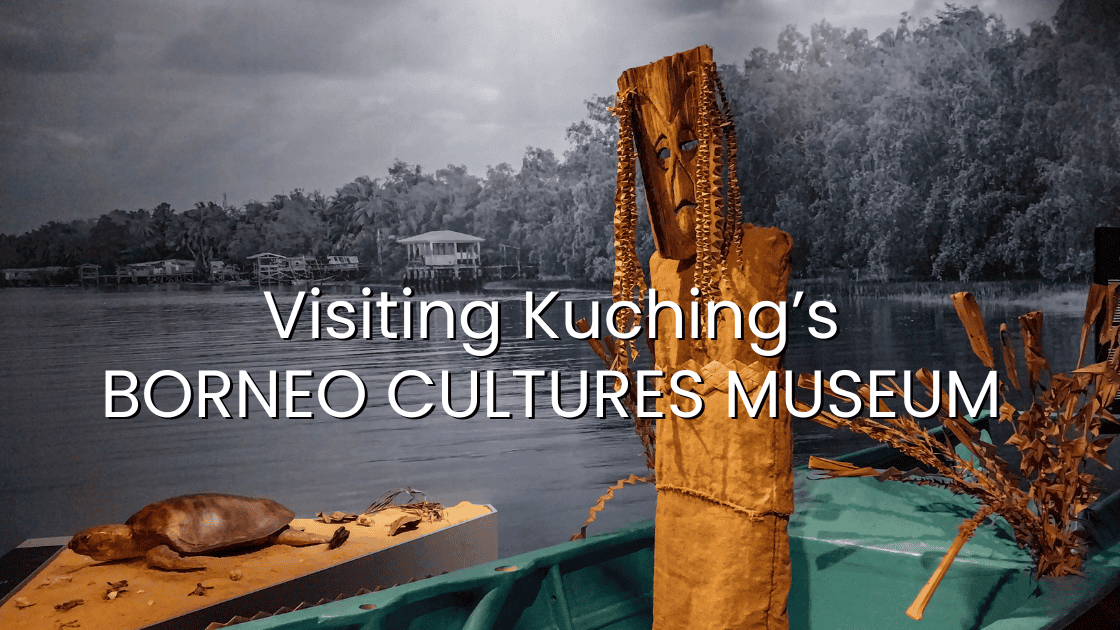
A relatively new kid on the block, the Borneo Cultures Museum opened in March 2022 as Sarawak’s flagship cultural institution, replacing the role once held by the historic Sarawak State Museum. Located opposite Padang Merdeka in Kuching, the five-story complex offers a rich journey through Borneo’s past and present with an incredible collection of artifacts, immersive multimedia installations, and cleverly designed interactive displays.
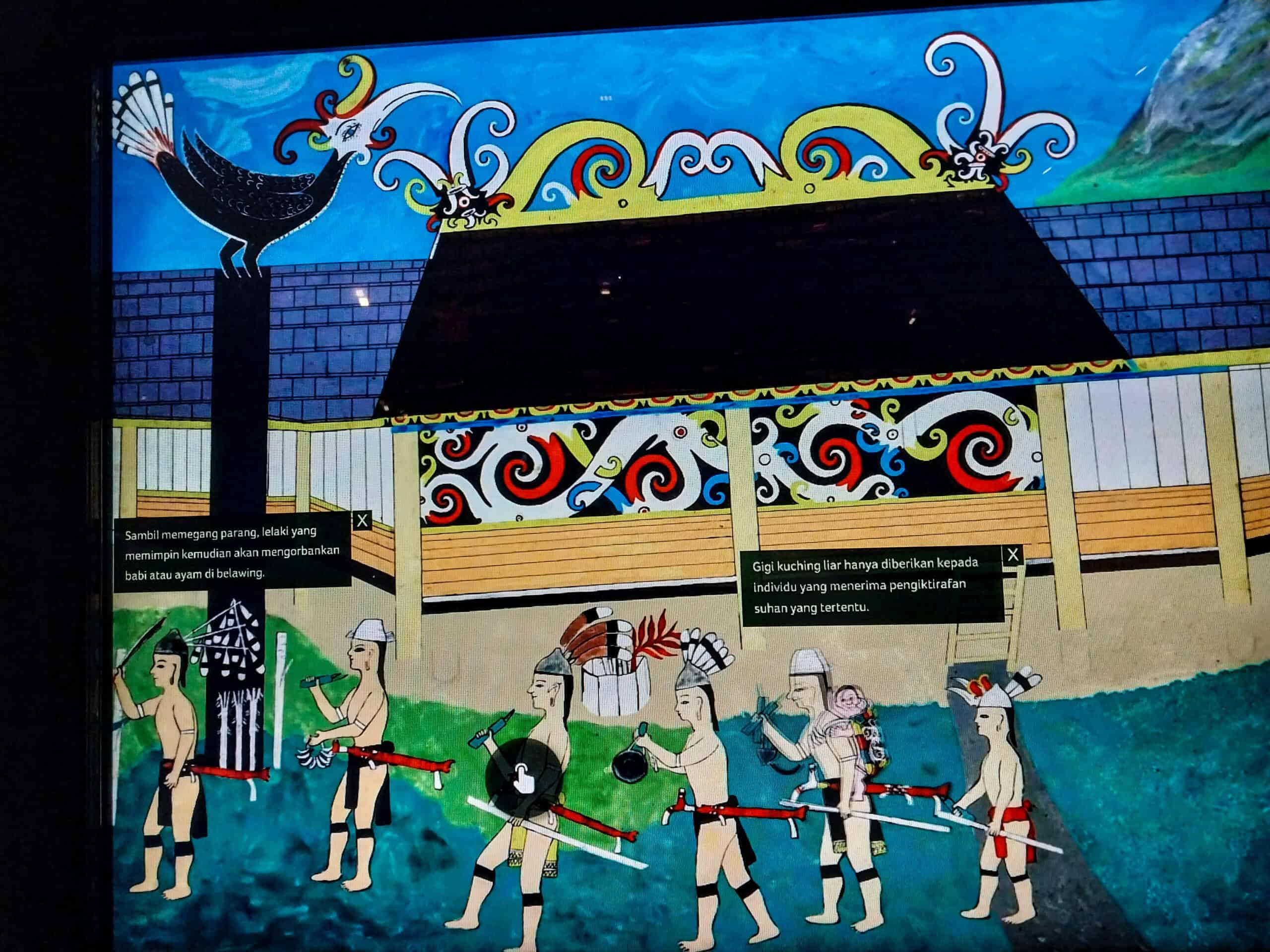
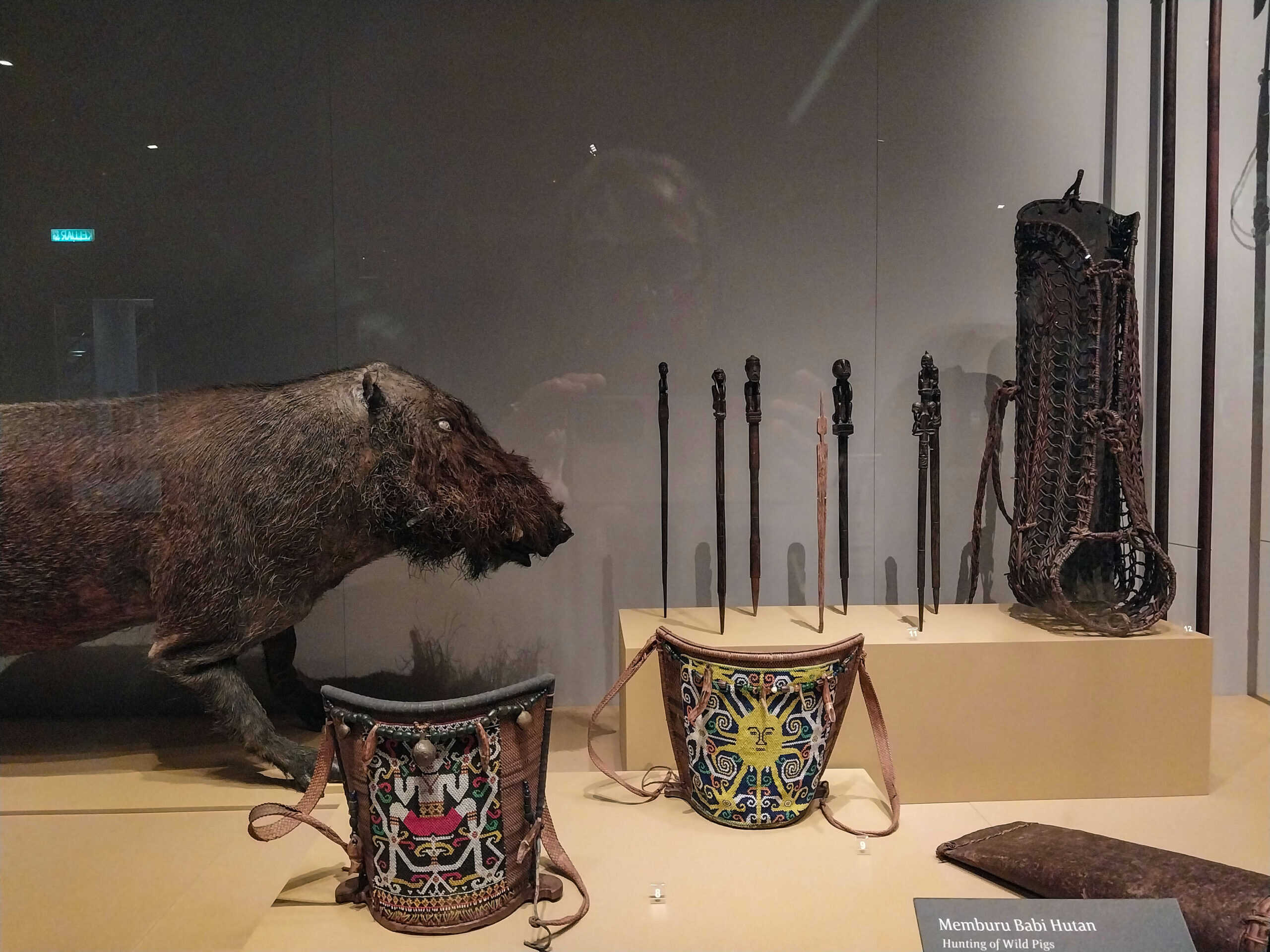
History and Architecture
Planned over nearly a decade and funded by the Sarawak government, the museum was designed by Arkitek KDI along with heritage consultants. The sweeping façade and tiered rooflines are inspired by the Indigenous baruk (traditional roundhouse), while the glass and concrete give it a modern edge. Timber cladding reflects Borneo’s rainforest heritage, and the vertical design symbolizes cultural growth. Inside are state-of-the-art conservation labs, archives, and education spaces that impressively meet international standards.
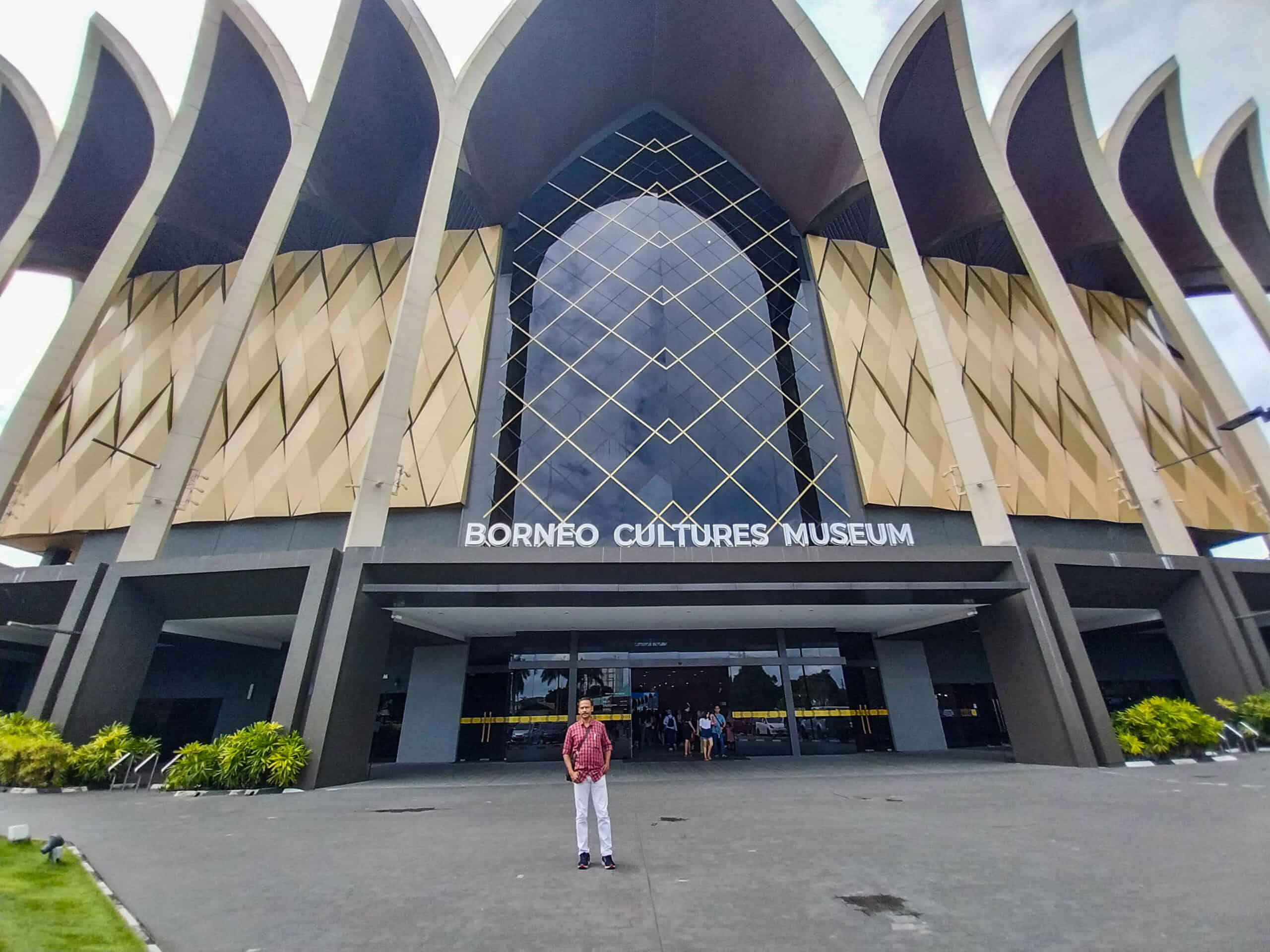
If you’re in Kuching, a visit to this cultural powerhouse is a must. Each floor offers a different theme, highlighting the diverse landscapes, traditions, and artistry of Sarawak and Borneo. Here’s how to make the most of your visit:
Ground Floor – A Grand Welcome
The ground floor sets the stage with its bright, open space and soaring ceilings. It’s impressive. Here you’ll find ticket counters, an information desk, and a gift shop featuring locally made crafts and souvenirs. This level also has an auditorium and dedicated areas for rotating exhibitions, so there is always something new on display. There’s also a restaurant and canteen if you need to refuel during your museum visit.
Second Floor – The Children’s Gallery
The Children’s Gallery, themed “Love Our Rivers,” is where families can discover the importance of Sarawak’s rivers and the need to keep them clean. It has interactive stations such as the River Waste Band, where kids can make music using instruments built from recycled river debris.
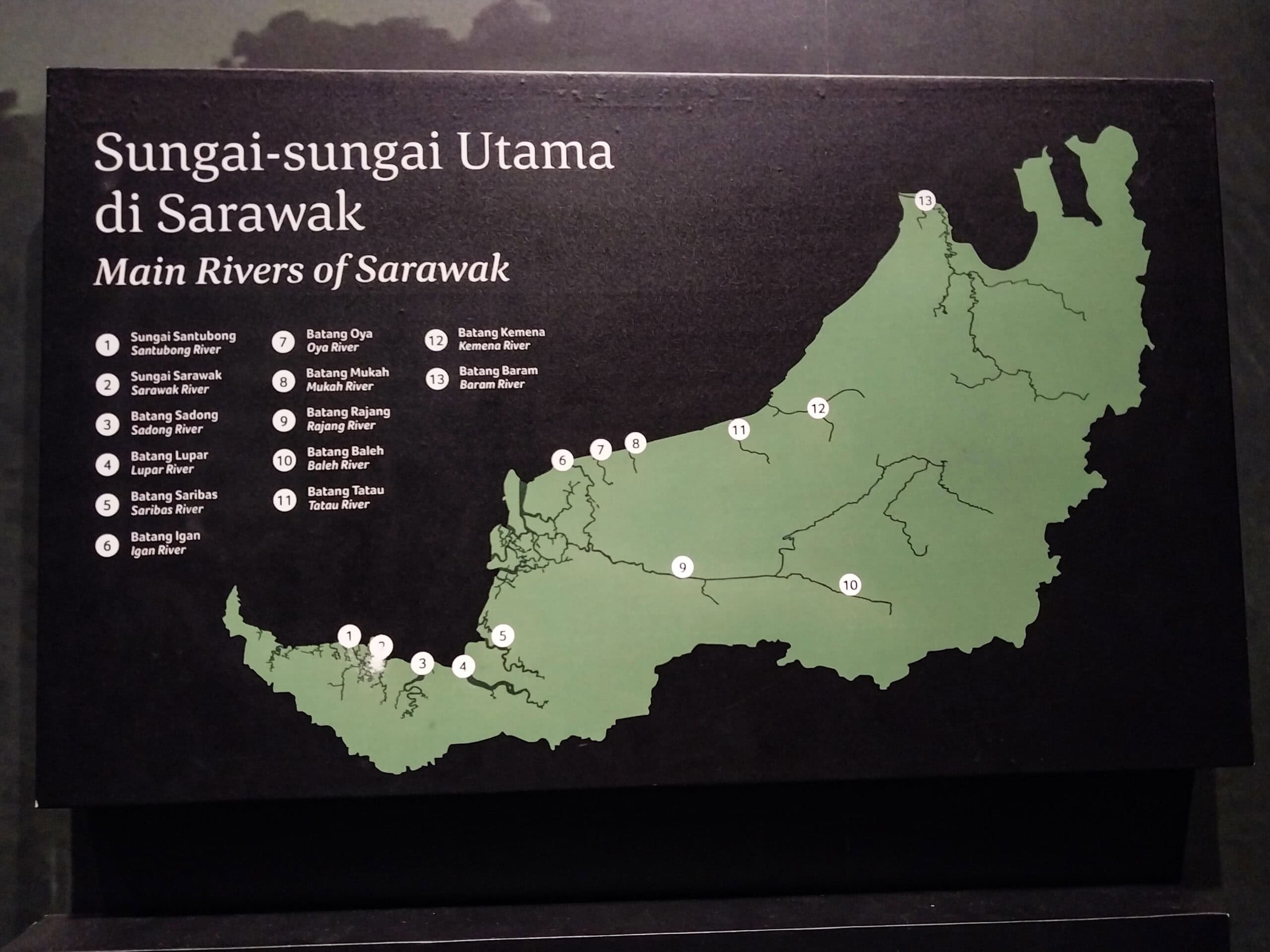
Visitors can also take part in creative workshops, explore colorful interactive displays, and relax in the family lounge. It’s a lively corner of the museum where curiosity, play, and environmental awareness come together, with plenty for adults to enjoy too. Be sure to allow enough time overall, because there is much more to see in the rest of the museum.
Third Floor – In Harmony with Nature
The third-floor gallery focuses on the relationship between Indigenous peoples and their environments. It’s broken up into three sections: highlands, rainforest, and coastal. As the largest gallery in the museum, it can feel a bit overwhelming, so take your time exploring.
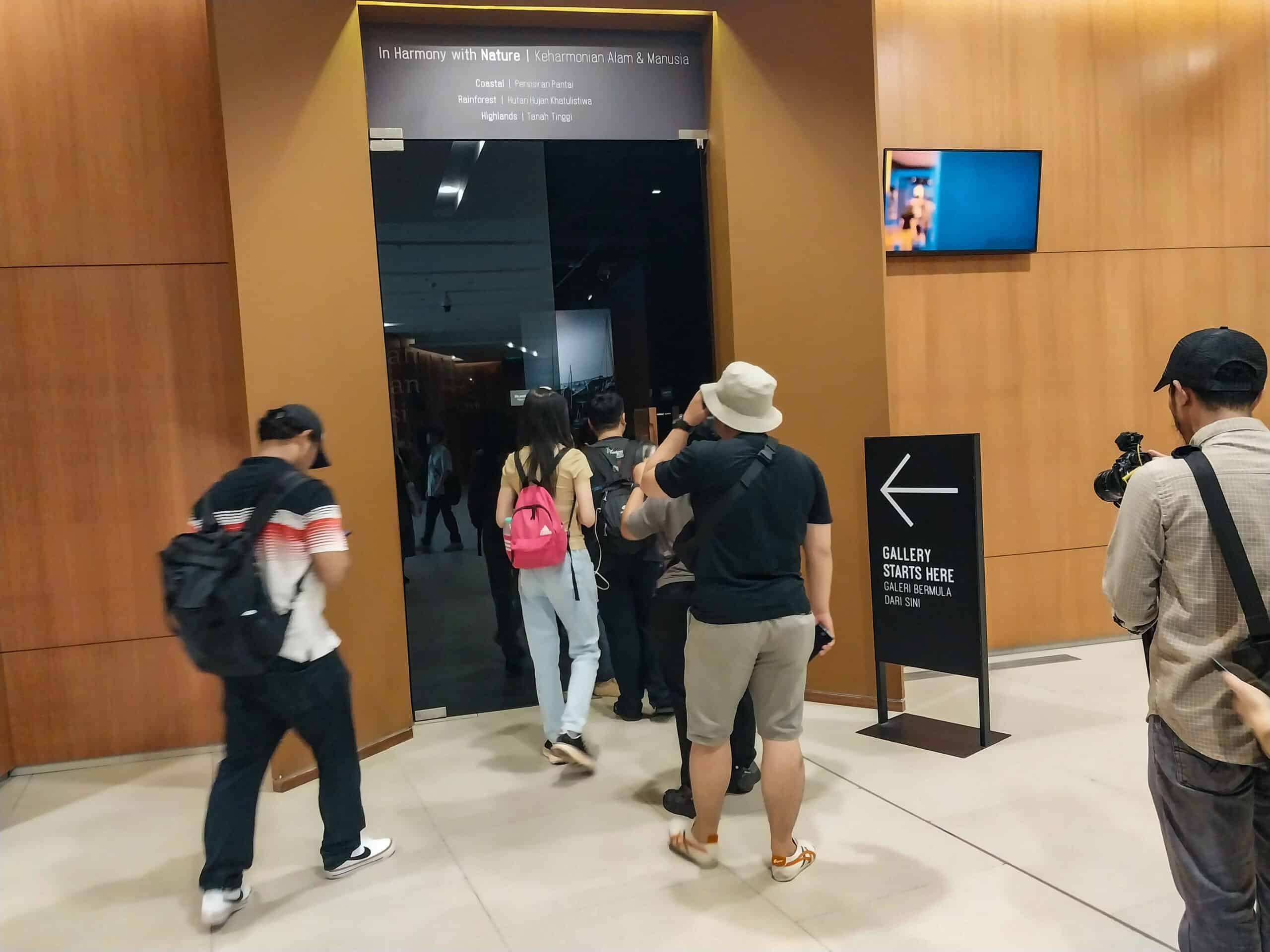
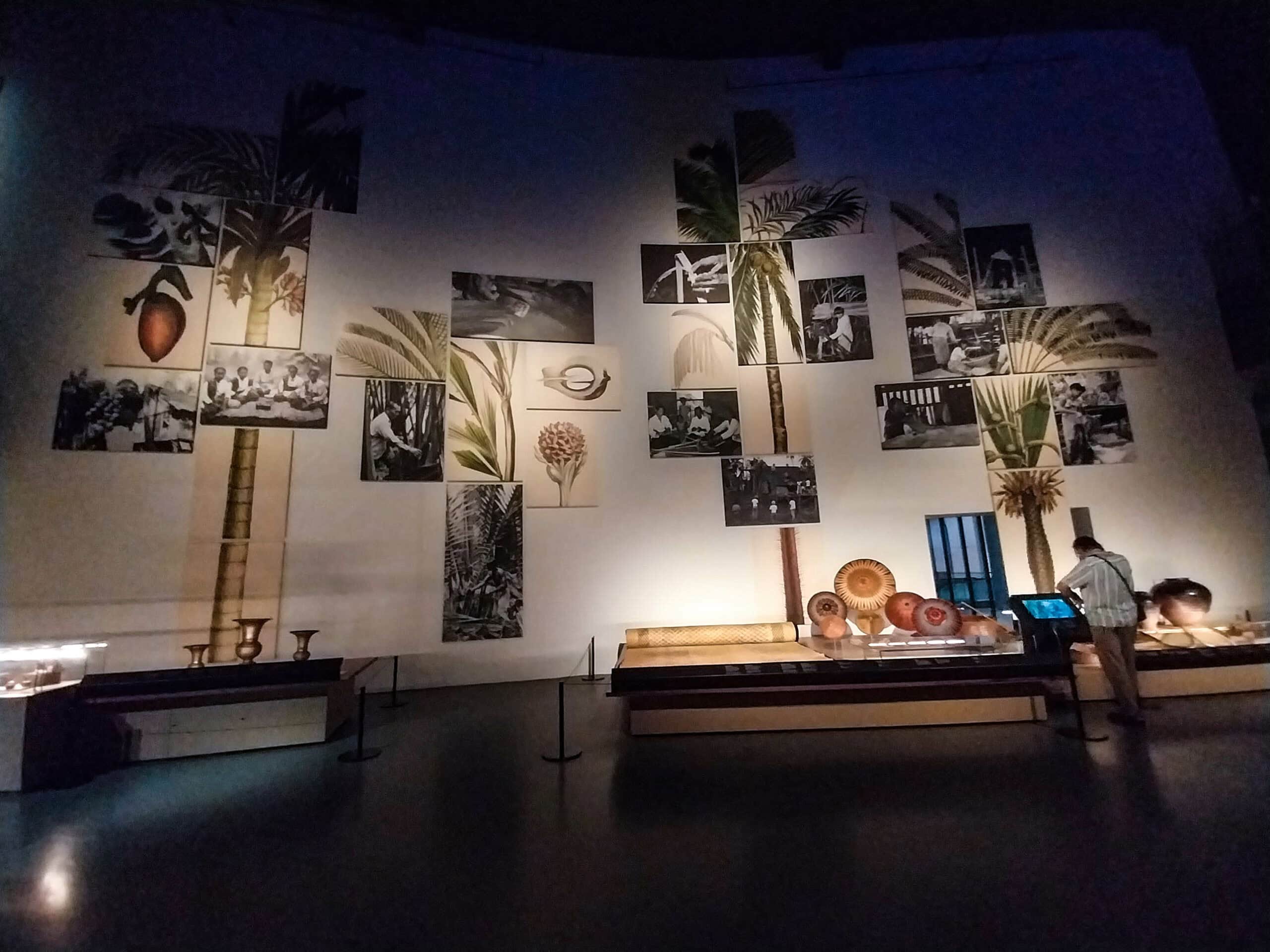
You can step into a life-sized Bidayuh Baruk (roundhouse), admire intricate beadwork, traditional clothing, pottery, fishing tools, and musical instruments, and see how daily life was intertwined with the mountains, rivers, rainforests, and seaside environments. It’s truly fascinating.
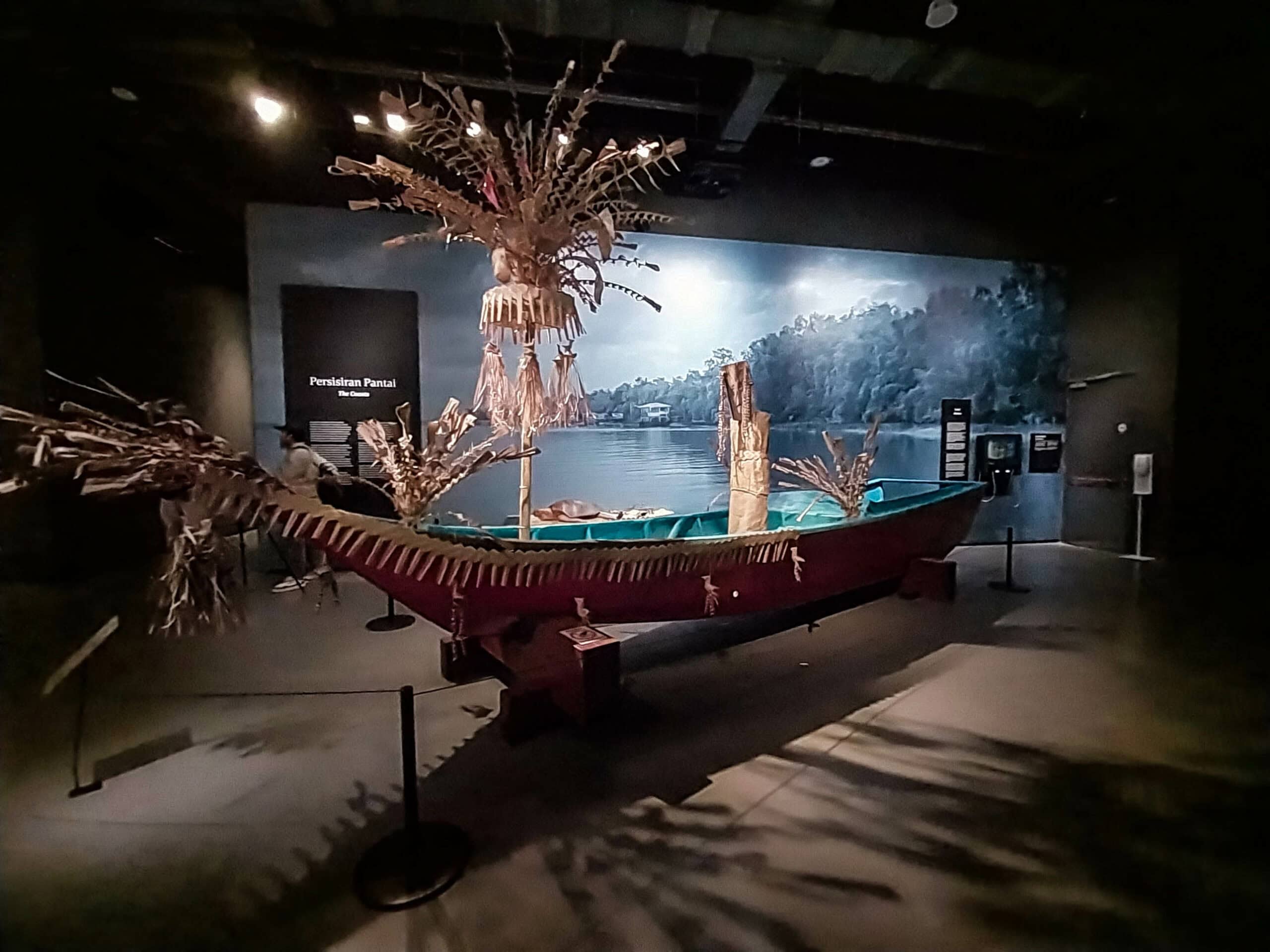
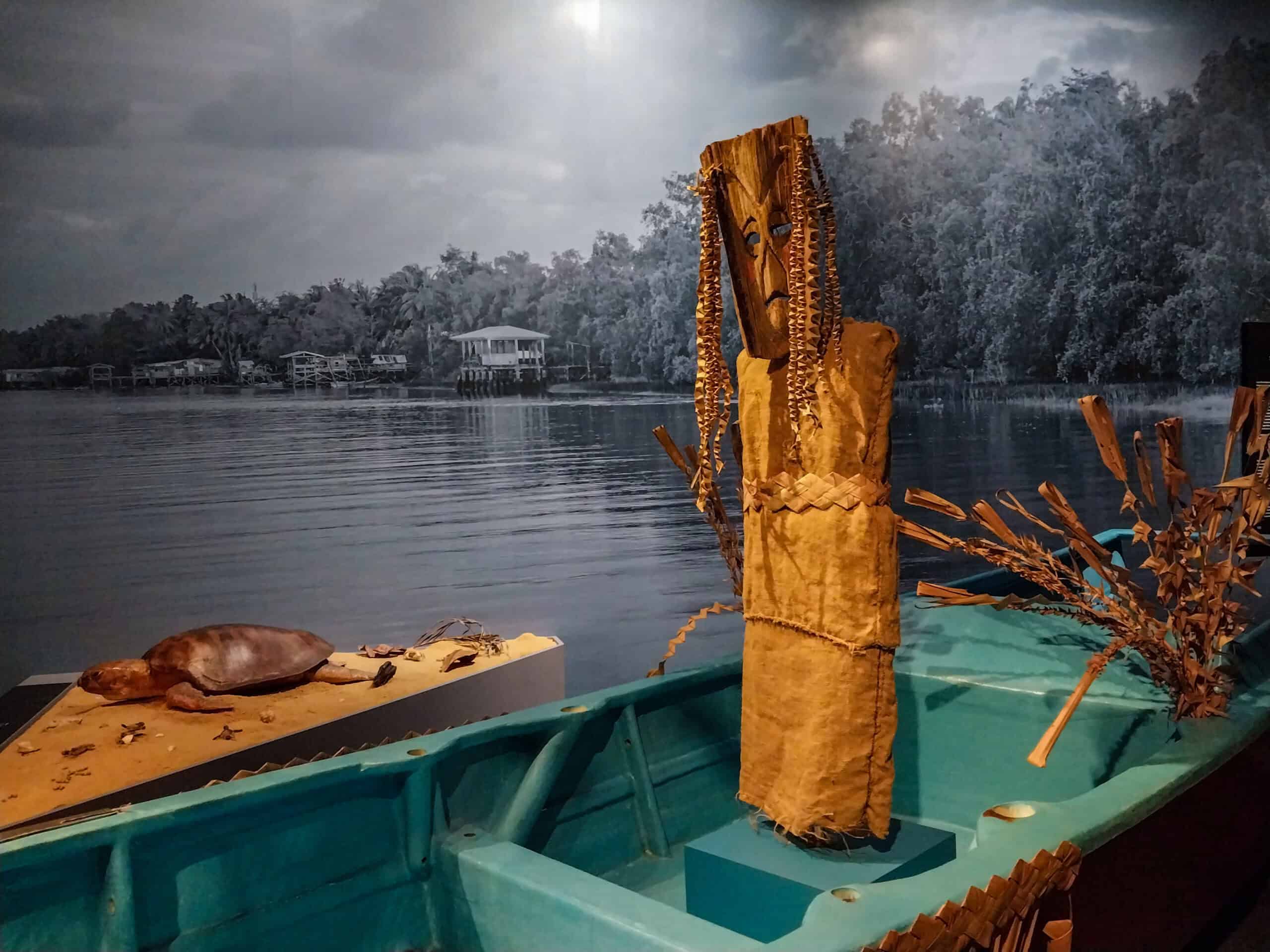
This gallery also addresses the once-practiced ritual of headhunting. For the Bidayuh and other Dayak groups, headhunting was apparently never random violence but a ritual tied to spiritual belief, community protection, and rites of passage. Skulls were thought to contain semangat (life force) that could safeguard the longhouse and ensure the fertility of crops.
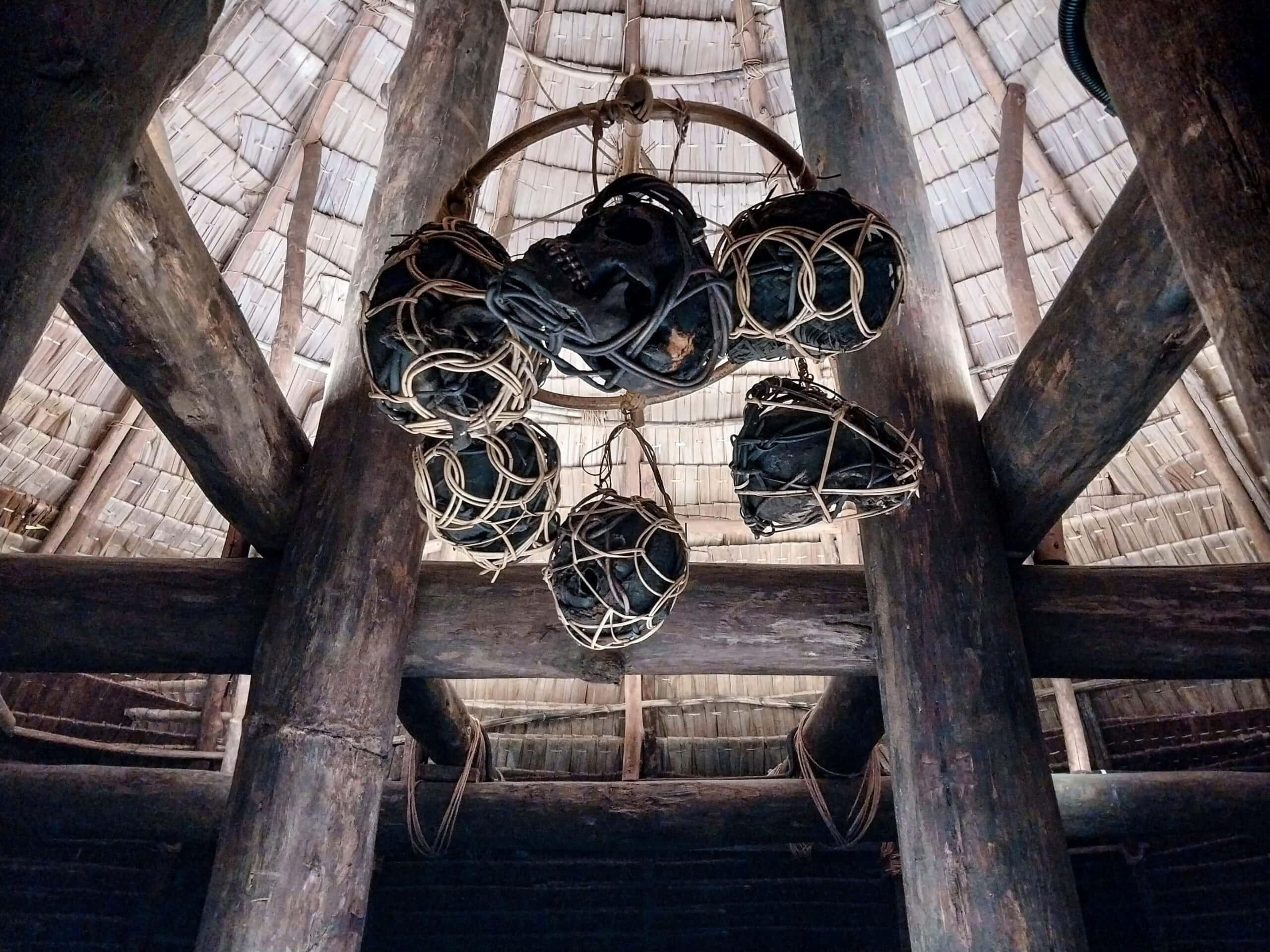
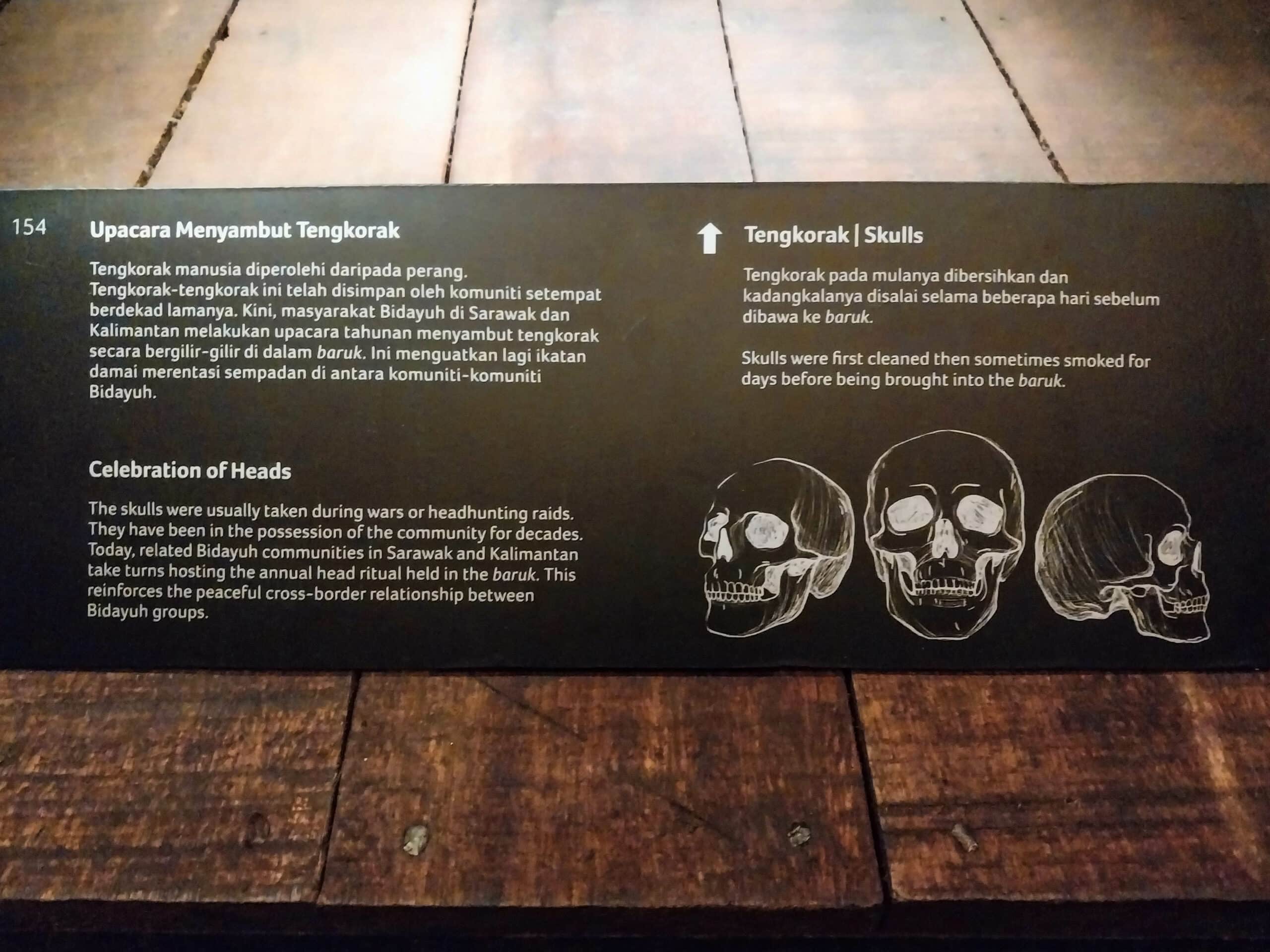
Successful headhunters gained respect and social standing, and in some traditions, it was even a step toward marriage. The practice declined in the late 19th and early 20th centuries due to colonial laws and missionary influence. There are actual skulls on display inside the roundhouse, so be sure not to miss it.
Fourth Floor – Time Changes
The fourth floor covers Borneo’s history, from prehistoric times to the modern era. You’ll see discoveries from the famous Niah Caves, including the remains of the ‘Niah Lady,’ along with exhibits on Sarawak’s colonial past. Interactive screens and digital books keep the gallery interesting. Like the other floors, it’s a lot to take in.
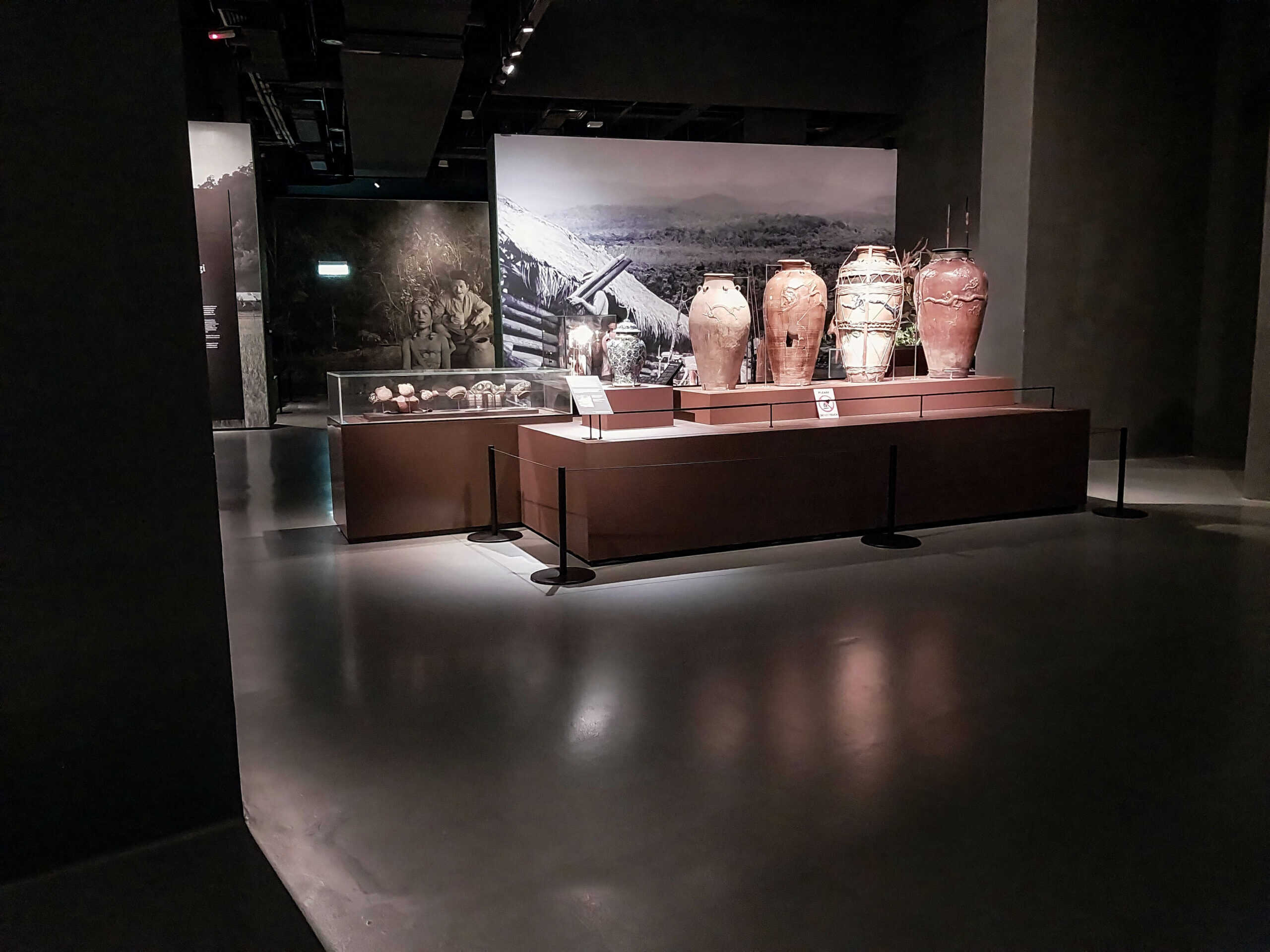
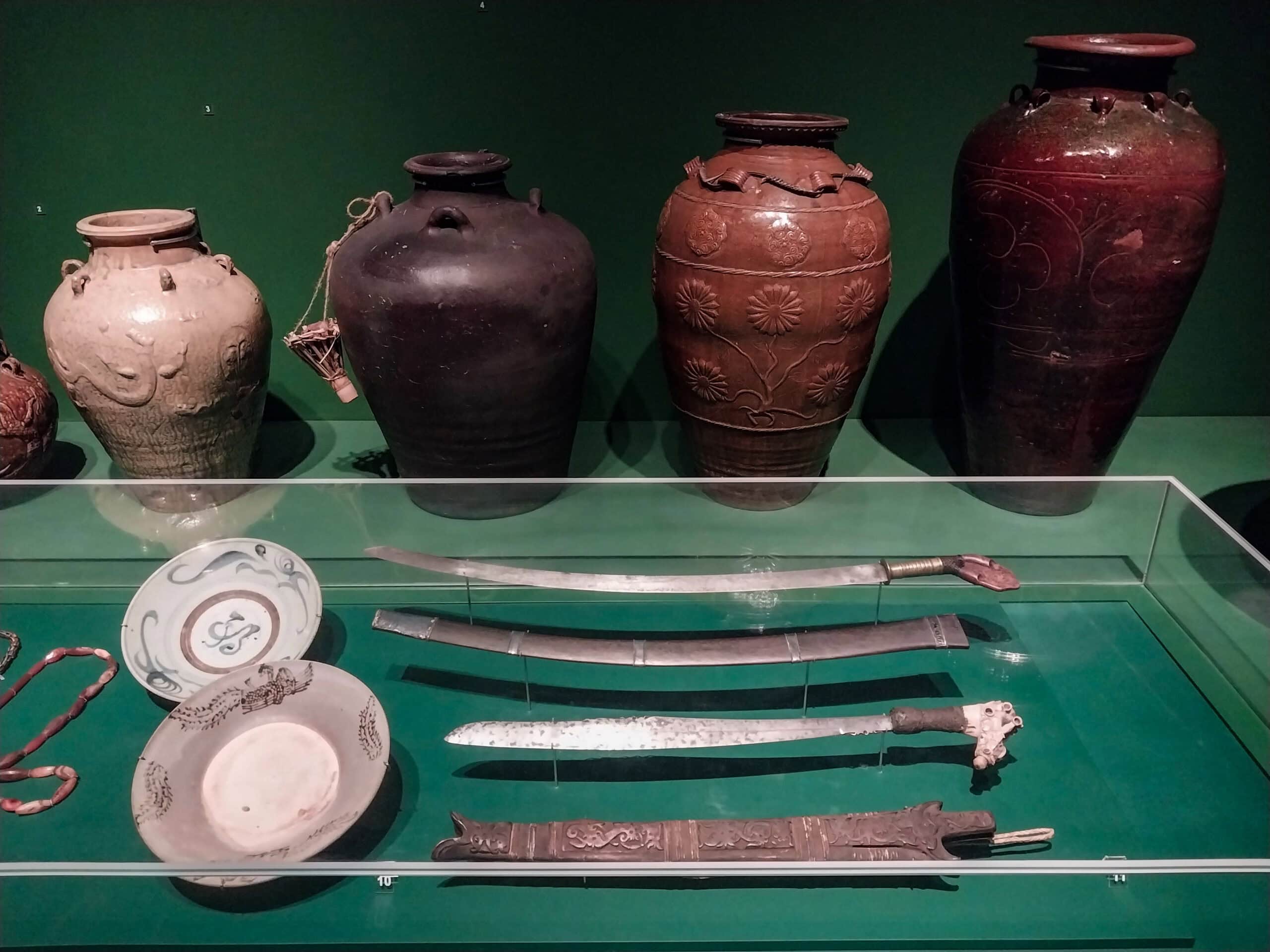
Fifth Floor – Objects of Desire
You’ll want to save plenty of time for the top floor. Called “Objects of Desire,” this gallery is a feast for the eyes, filled with ceremonial costumes, heirloom gongs, and sacred artifacts. The showstoppers, though, are the kelirieng burial poles, towering wooden monuments carved by the Orang Ulu and other Indigenous communities.
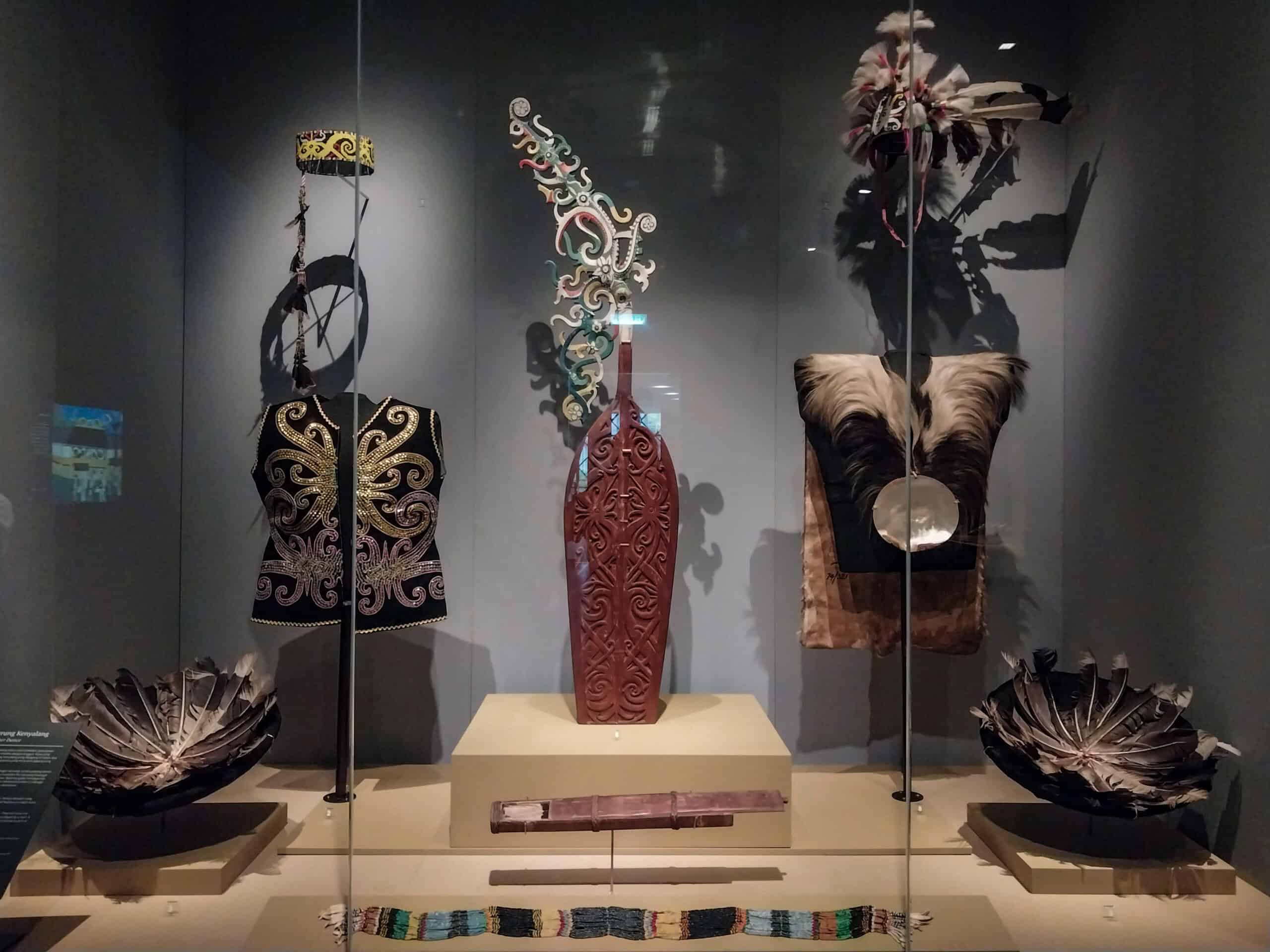
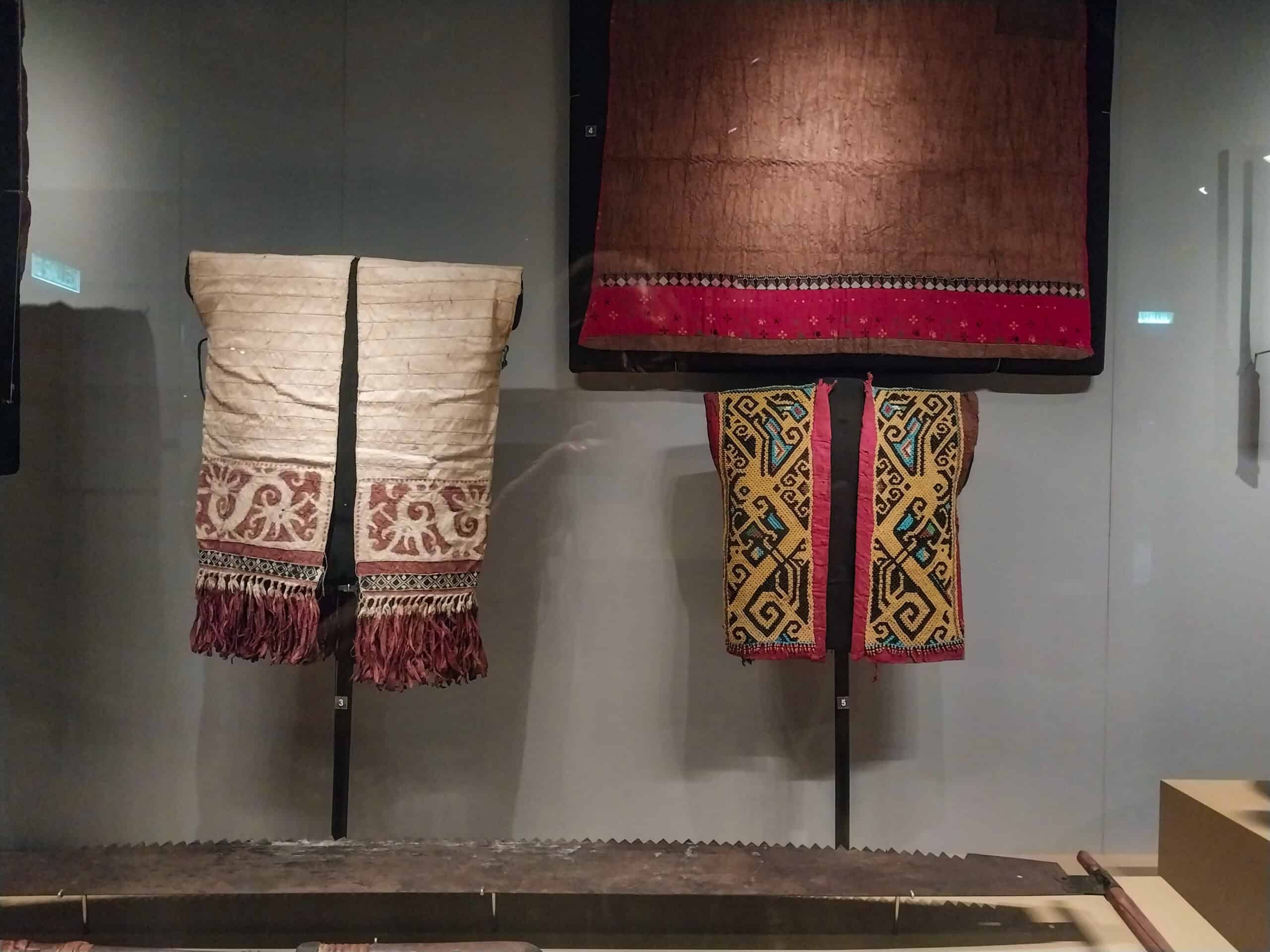
These striking carvings, often compared to North American totem poles, are unique to Borneo and firmly rooted in local tradition. Known as kelirieng among the Punan and other Orang Ulu groups, and jerunei among the Melanau, these poles were carved from dense ironwood (belian) and served as towering funerary monuments reserved for leaders and high-status individuals.
The poles lifted the deceased above the ground as a symbol of prestige, protection, and spiritual authority. They typically stand between 26-49 feet tall, and a single pole could take 3–5 years to complete! Their intricate carvings contain spirals, spirit faces, animal motifs, and interlocking patterns, which were believed to hold spiritual power, with some ceremonies historically involving elaborate rituals.
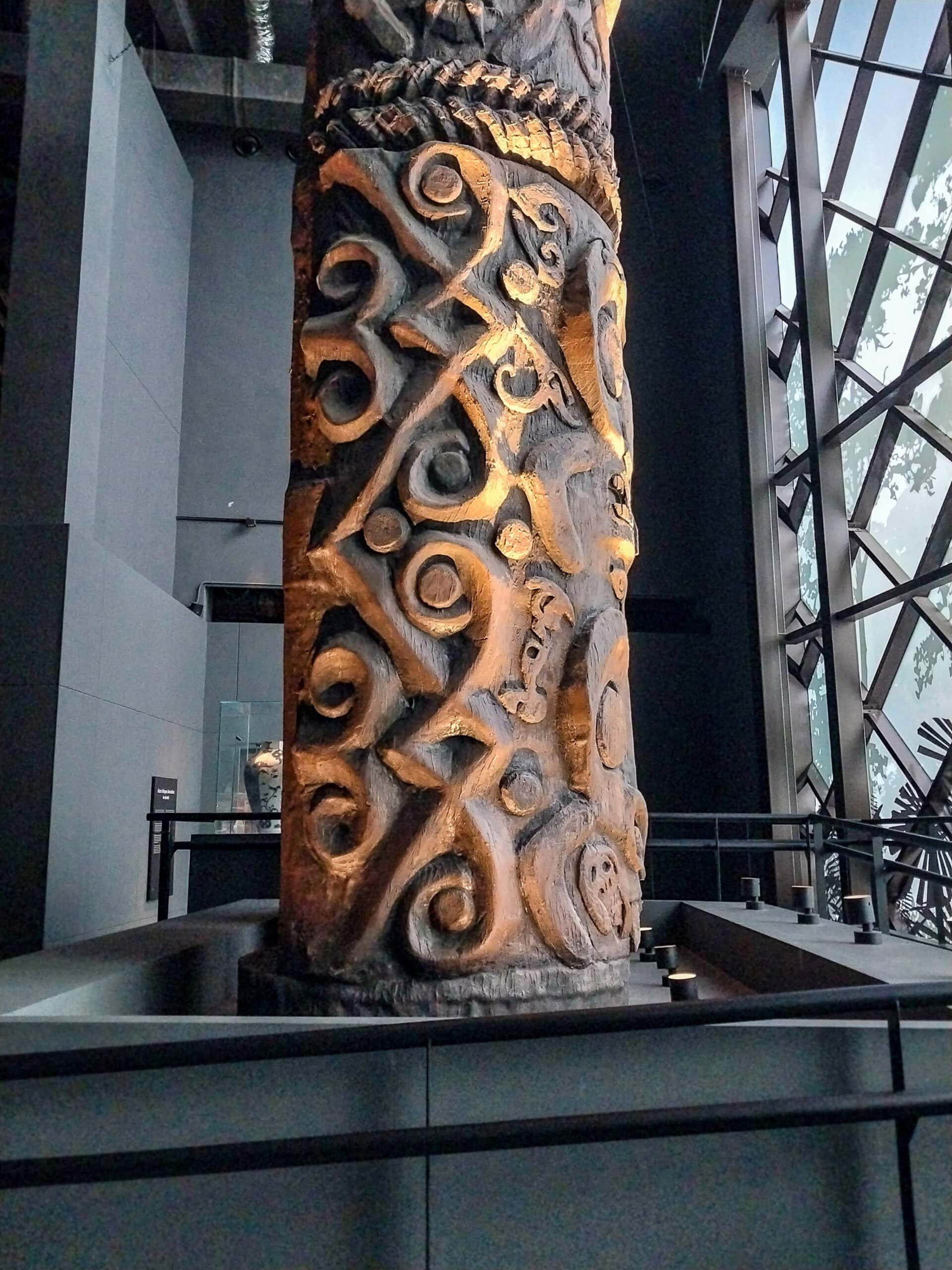
Today, few examples survive. Logging, missionary influence, and cultural change have rendered these poles exceptionally rare. Thankfully, Borneo Cultures Museum houses one of the most significant collections, ensuring that Sarawak’s monumental carving heritage remains accessible to future generations, and giving you yet another reason to visit this incredible museum.
Borneo Cultures Museum is a Must-Visit
As you can see, the Borneo Cultures Museum has something for everyone. Whether you’re a museum fan or not, this museum will leave you wanting to know even more about the fascinating Borneo culture. And it will certainly make past and future travels through the region even richer. If you’re visiting Kuching, it’s an experience not to be missed.
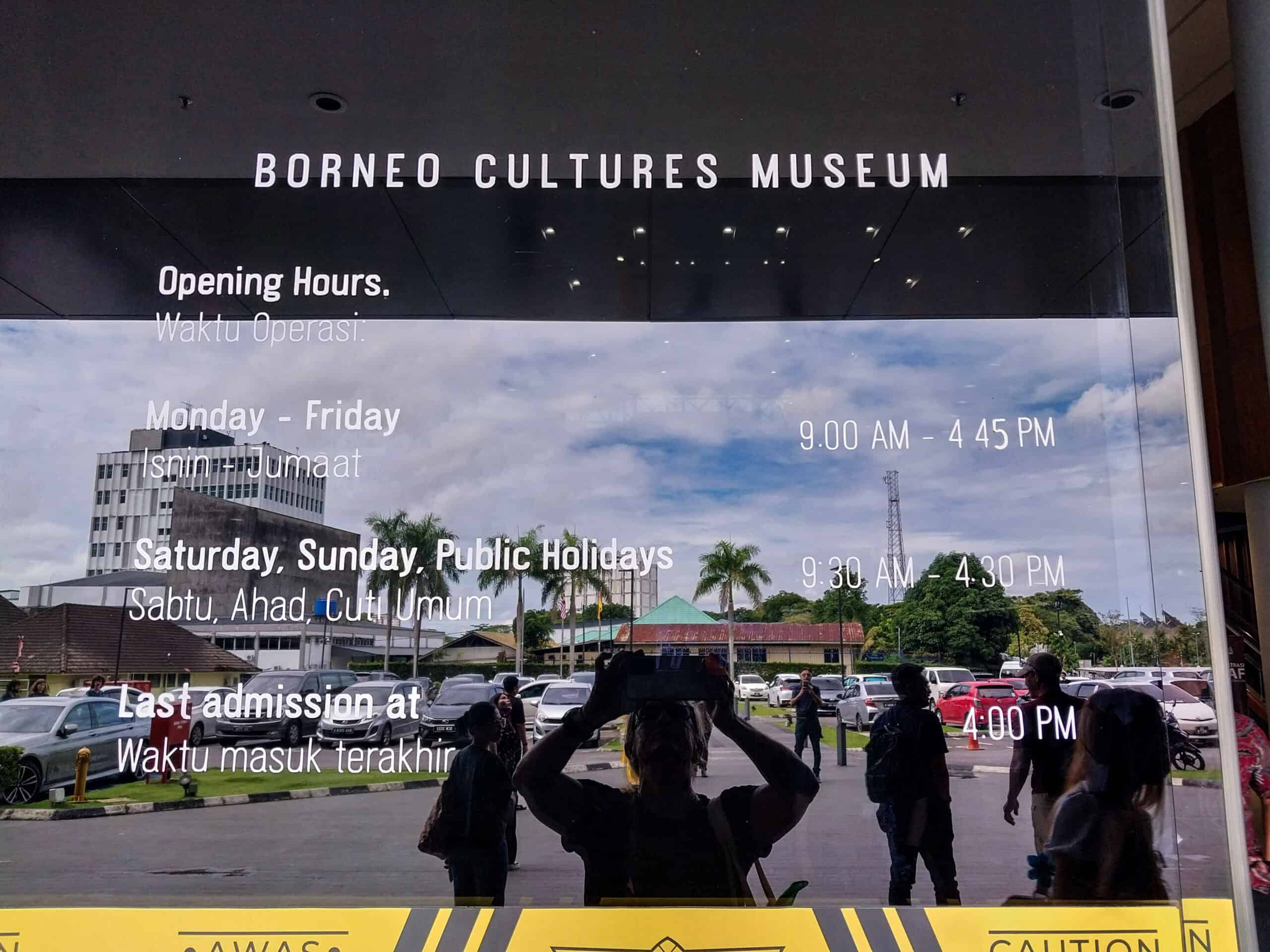
The museum is open daily from 9:00am to 4:45pm (weekends and holidays 9:30am until 4:30pm). Ticket prices vary depending on whether you’re a Sarawakian, Malaysian, or international visitor, and there are discounts for students, seniors, and children. The building is diverse visitor-friendly, with elevators, wheelchair and stroller ramps, a nursing room, baby-changing stations, and free Wi-Fi throughout. Plan to spend two to three hours if you want to see most of the galleries without rushing. Non-flash photography is also welcome.
Borneo Cultures Museum
Jalan Tun Abang Haji Openg
Kuching, Sarawak
082-548215/ 082-548216

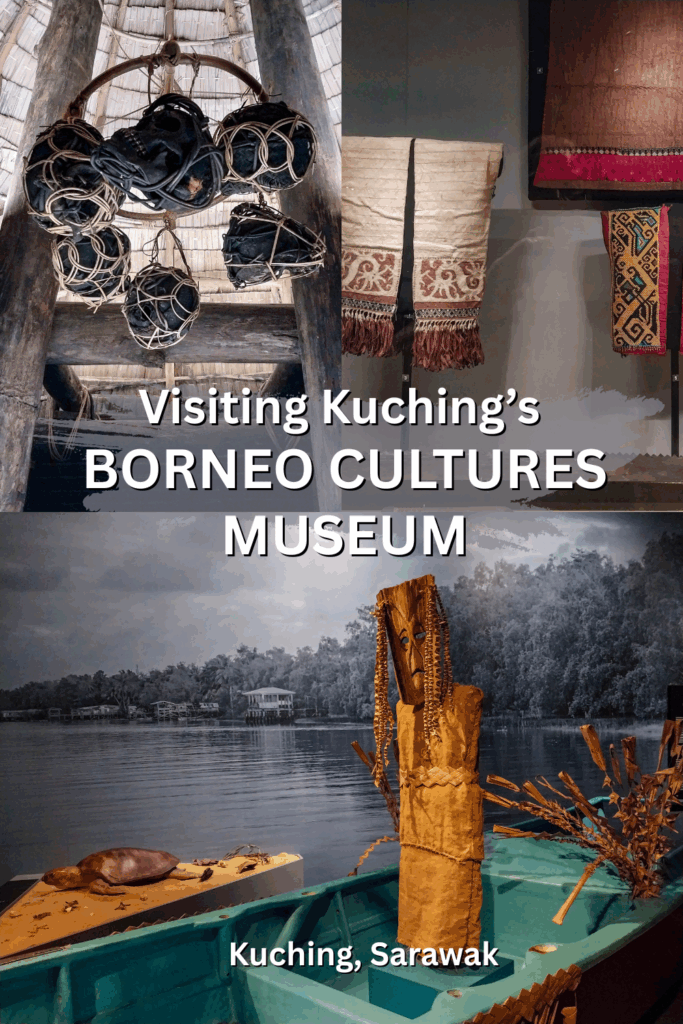
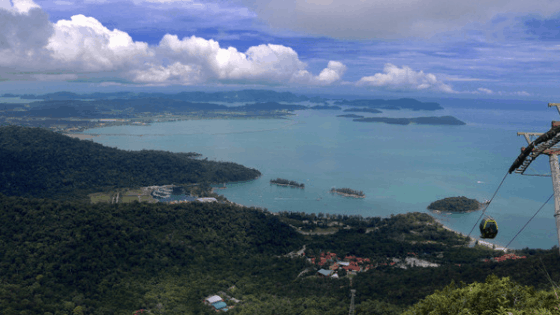
Leave a Reply